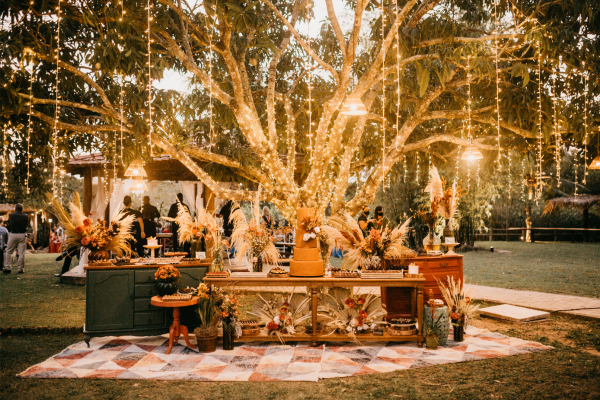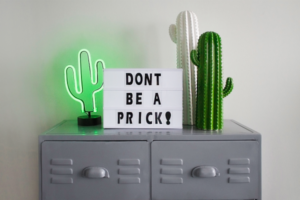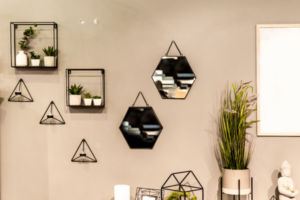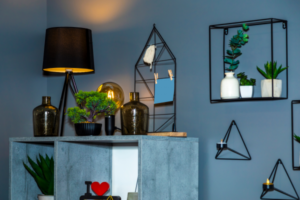Interior design is an art form that transcends mere aesthetics; it’s a reflection of one’s personality, taste, and lifestyle. In recent years, there has been a notable shift in the interior design industry towards personalization. Homeowners and designers alike are increasingly embracing the concept of creating spaces that are uniquely tailored to the individual. This shift has given rise to a new era in interior design, one that celebrates diversity, creativity, and personal expression. In this article, we will explore the concept of personalized perfection in interior design, its importance, and how it can be achieved.
The Rise of Personalization in Interior Design
Historically, interior design trends were often driven by societal norms and cultural influences, resulting in homes that often looked similar, with little room for individuality. However, the 21st century has seen a dramatic change in this approach. The advent of digital technology, social media, and a growing appreciation for self-expression has fueled the desire for personalized interior spaces.
Today, interior design is no longer confined to a set of rigid rules and predetermined styles. Instead, it has evolved into a dynamic and highly customized practice that allows homeowners to craft spaces that resonate with their unique sensibilities. This shift towards personalization is driven by several factors.
1. Embracing Individuality
People have come to realize the importance of self-expression and individuality in all aspects of life, including their homes. They want their living spaces to reflect their personalities, experiences, and values. In a world that often feels chaotic and impersonal, the home has become a sanctuary for self-expression.
2. Technology and Accessibility
Advancements in technology have made it easier for homeowners to access a vast array of design inspiration and resources. Online platforms, design apps, and virtual reality tools have democratized interior design, allowing anyone to explore and experiment with design concepts. This accessibility has empowered individuals to take a more active role in the design process.
3. Sustainability and Conscious Consumption
As environmental awareness grows, people are becoming more conscious of the materials and products they bring into their homes. Personalized interior design often involves sustainable and eco-friendly choices, reflecting an individual’s commitment to a greener lifestyle.
4. Changing Demographics
Demographic shifts, such as the rise of the millennial generation as homeowners, have influenced interior design preferences. Millennials value experiences, authenticity, and personalization, which has driven the demand for unique and customized living spaces.
The Importance of Personalized Interior Design
Personalized interior design offers a myriad of benefits, both aesthetic and psychological. Here are some key reasons why it has become increasingly important:
1. Enhances Well-being
A well-designed space that aligns with a person’s preferences and needs can have a significant impact on their overall well-being. When individuals are surrounded by elements they love and feel comfortable with, it can reduce stress and enhance their mood.
2. Fosters Creativity
Personalized spaces are often filled with items that hold personal significance or tell a story. This can stimulate creativity and provide inspiration for personal and professional endeavors. Being in a space that reflects one’s passions and interests can spark innovative thinking.
3. Increases Functionality
Personalized design takes into account the practical needs and routines of the homeowner. Spaces can be optimized for functionality, making daily life more efficient and enjoyable. From customized storage solutions to ergonomic furniture choices, every aspect of the design can be tailored to the individual.
4. Creates a Sense of Ownership
When people are actively involved in the design process, they develop a strong sense of ownership and connection to their living spaces. This emotional attachment can lead to a deeper appreciation for the home and a desire to maintain and care for it.
5. Reflects Personal Growth
As individuals evolve and grow, their design preferences may change as well. Personalized interior design allows for flexibility and adaptability, ensuring that the space can evolve with the homeowner’s changing tastes and needs.
Achieving Personalized Perfection in Interior Design
Creating a personalized interior space that embodies perfection requires careful consideration and a thoughtful approach. Here are some key steps to achieving this:
1. Self-Reflection
Begin by reflecting on your personal style, preferences, and lifestyle. Consider what colors, textures, and themes resonate with you. Think about the activities you enjoy in your home and how the design can support those activities.
2. Seek Inspiration
Explore a wide range of design inspiration sources, from interior design magazines to online platforms like Pinterest and Instagram. Save images and ideas that appeal to you, and use them as a starting point for your design journey.
3. Collaborate with a Designer
While personalized design often involves a DIY approach, working with a professional interior designer can provide valuable expertise and guidance. A designer can help you translate your ideas into a cohesive and functional design.
4. Consider Customization
Customization is at the heart of personalized interior design. Invest in custom furniture, lighting, and decor pieces that reflect your unique style. These one-of-a-kind items can become focal points in your space.
5. Balance Aesthetics and Functionality
Personalized perfection isn’t just about aesthetics; it’s also about creating a space that works for you. Ensure that the design balances beauty with functionality, incorporating elements that make your daily life easier and more enjoyable.
6. Embrace Sustainable Choices
Make environmentally conscious choices in your design, such as selecting sustainable materials, energy-efficient appliances, and eco-friendly finishes. This not only aligns with modern values but also contributes to the longevity of your space.
7. Add Personal Touches
Incorporate personal touches throughout your space, such as family photographs, artwork, and mementos from your travels. These items tell the story of your life and add depth to your design.
8. Continuously Evolve
Remember that your personal style may evolve over time. Embrace change and be open to updating your space to reflect your current preferences and experiences.
Case Studies in Personalized Perfection
To illustrate the concept of personalized perfection in interior design, let’s explore a few case studies:
1. The Eclectic Bohemian Oasis
A young couple with a love for travel and eclectic art transformed their urban apartment into a bohemian oasis. They combined vibrant colors, patterned textiles, and a mix of vintage and handmade furniture to create a space that reflects their adventurous spirit. The apartment is not only visually stunning but also a constant source of inspiration for their next adventure.
2. The Minimalist Zen Retreat
A busy professional seeking tranquility and simplicity worked with a designer to create a minimalist Zen retreat. Neutral colors, natural materials, and a clutter-free environment promote relaxation and mindfulness. Every piece of furniture and decor serves a purpose, contributing to a sense of calm and serenity.
3. The Family-Friendly Functional Home
A family with young children designed their home with a focus on functionality and durability. Custom-built storage solutions keep toys and clutter at bay, while washable and stain-resistant fabrics ensure that the space remains practical and low-maintenance. The design reflects the family’s values of togetherness and practicality.
Conclusion
Personalized perfection in interior design is not a one-size-fits-all concept. It’s about creating spaces that resonate with the individual, whether it’s a vibrant bohemian apartment, a minimalist retreat, or a family-friendly home. This shift towards personalization represents a positive evolution in interior design, one that celebrates diversity, creativity, and the importance of individual expression.
As homeowners continue to seek spaces that reflect their unique personalities and lifestyles, the interior design industry will evolve to meet these demands. Whether you choose to work with a professional designer or embark on a DIY journey, remember that your home is a canvas for self-expression, a place where you can achieve personalized perfection. So, go ahead, embrace your individuality, and let your living space tell your story, one design choice at a time.



